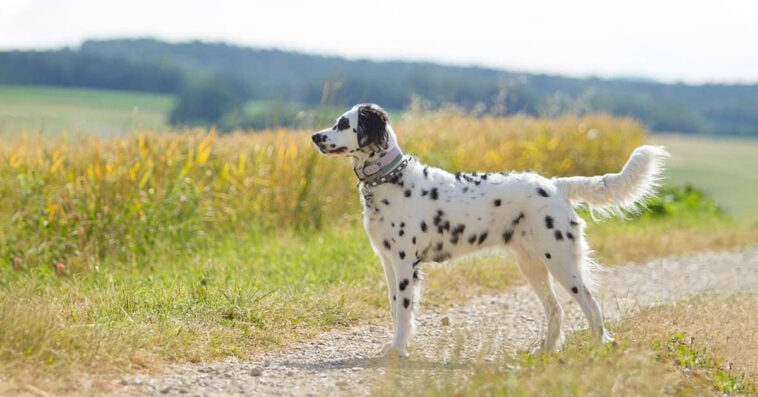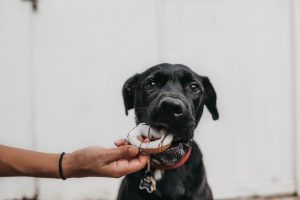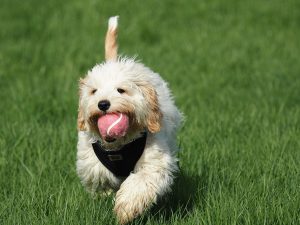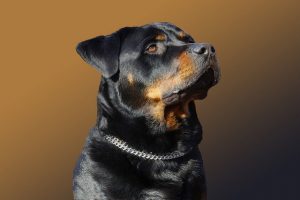When most people picture a Long-haired Dalmatian, they consider it as the newest version of this breed developed by breeders. But what many don’t realize is that long-haired Dalmatians aren’t a new creation or a modern twist by breeders. In fact, they’ve been part of the breed’s history since the very beginning.
While they might seem like a recent trend, long-haired Dalmatians have always existed — they just didn’t receive much attention. For years, they were often overlooked or mistaken as an anomaly. It wasn’t until dedicated dog lovers and breed enthusiasts started to recognize and celebrate this variation that long-haired Dalmatians began gaining the recognition they deserve.
With their feathery coats and striking appearance, it’s no wonder they’re turning heads today. But beyond the unique look, they’re still very much Dalmatians at heart — intelligent, active, and loyal.
If you are planning to get a Long-haired Dalmatian and looking for a complete guide on the breed, keep reading this article.
So, let’s dive into it.
Table of Contents
What is a long-haired Dalmatian?
Also known as the long-coated Dalmatians, they are purebred dogs from the region which is nowadays called Croatia.
Long-haired Dalmatians can be considered as the rare version of Dalmatians. They have medium-haired white fur with random black-colored spots. Apart from the coat, most of the Dalmatian and Long-haired Dalmatians traits are similar and you won’t find much difference.
How Do You Get a Long-Haired Dalmatian?
Interestingly, if one of the parents of Dalmatian (even if they are short-coated) has at least one copy of recessive LC Gene, their puppies may have a long coat. This means the short-haired dogs may give birth to long-haired Dalmatian puppies without intentional breeding.
Still, the long-coated variety can be yielded intentionally by breeding 2 long-haired Dalmatians. In such a scenario, the chances of a long coat in puppies are very high.
Long-Haired Dalmatian History
Dalmatians have a very long history and their heritage trace can be seen back to 1374. Bishops used them as hunting dogs. Initially, they were known as Canis Dalmatia, later they were named Dalmatian in 1771 by an author called Thomas Pennant and that is how it is recorded for the first time by this name.
Furthermore, in the 1800s, the Dalmatian got famous as a Spotted Coach Dog because it was seen always alongside their master’s carriage.
Finally, in 1982 an English man from England take the credit for the unofficial breed standard and after one year it is made an official Standard breed in the AKC.
Physical Appearance and Body Features
Weight and Size
Just like the standard Dalmatians, the long-haired Dalmatians are medium-sized dogs and they have the same size and weight. Their height may vary between 22 to 24 inches while they may weigh around 70 lbs.
Color and Coat
This dog is born with a pure white coat without any spots on its body. At the age of 2 weeks, it starts developing the black or liver color spots on the legs, ears, and tails until the age of 18 months. But rarely, some dogs may also have blue, brindle, lemon, or orange spots on their bodies.
They have a 2 to 4 inches long coat that has feathers on the tail, ears, and legs.
Face
They have expressive faces with intelligent and alert expressions along with a strong muzzle that is level and parallel to the top of the skull.
Eyes Color
Long-haired Dalmatian has beautiful rounded dark eyes, but some are also seen with blue eyes.
Life span
This beautiful dog has a life span of anywhere between 9 to 13 years. It has a little shorter lifespan compared to other dogs due to its generic health dispositions.
Fun Fact: Dalmatians have unique spots on their body, much like our fingerprints, and do not have the same pattern or amount of spots as other Dalmatians.
Variation of Spot colors
Black-spotted
As the name suggests, this variety of Dalmatians has black dots on their bodies, mostly on the face, ears, tail, and chest. While it can be seen in both long-haired Dalmatians and short-haired Dalmatians.
Liver/brown spotted
These Dalmatians have brown shaded spots all over their face and body. However, you can easily guess the difference between LC Dalmatian and Short-Haired Dalmatian with brown spots.
Lemon color spotted
Long-haired Dalmatians are seen very rarely in this color of variety but they might be seen in short-coated Dalmatians.
Behavior and Temperament
A Dalmatian is a gentle, friendly, and protective dog that can become a fantastic family dog. But you need to train and socialize your dog well at a young age. Otherwise, it may develop aggressive behavior with time.
This dog has a playful, athletic, friendly, loyal, and highly energetic temperament. With an early-age socialization and training, it can become a family-friendly dog. All this depends on the way you raise and train your Dalmatian puppy.
Along with that, you should also be aware of the other side of the picture and that is, they may show you destructive behavior, continuous barking, or stubbornness. This scenario may have many reasons but chances are high that it is due to not being trained and socialized properly.
Exercise
The LH Dalmatians are energetic dogs and they need high-intensity of exercise to keep them mentally and physically healthy. They love walking and playing so you need to make sure to take out plenty of time for playing with them.
This breed requires at least 1 to 2 hours of Exercise daily with a routine walk. Otherwise, get ready for behavioral issues.
Training
They are intelligent dogs and would not give you a tough time in training sessions. But for better results, you need to remember a few things.
- Early training is one of the keys to training a Long-haired Dalmatian. The training should be started from the day 1 you get your puppy. Most probably, you’ll get the puppy when it’s 8 weeks old or more.
- Start training from your house and encourage the good behavior of your dog.
- Consistency and Patience are required.
Training Tips
Training is not about just teaching basic or regular commands and instructions to your dogs but actually, it is a way of living with them. Practically it is a behavior that you do with them, what you want from them, what you let them do, and what you disallow them to do. These are all the messages. If you convey the right message you will not face any problems with your dog.
Feeding and Diet
Diet is the key to the good health of any dog. But when we talk about Dalmatians then it is a little bit difficult because you need to care about a few things, such as:
Low-purine diet
Make sure to provide your Long haired Dalmatian with low-purine food because they have inherited problems related to metabolism. If you give high-purine food it will be difficult for them to digest.
Ideal food for Long-coated Dalmatians
Fruits, Vegetables, Cheese, and potatoes are the ideal food for this breed but it is also recommended to ask first from your vet. Apart from the ideal food, make sure you don’t overfeed them.
Feeding Time table for your LH Dalmatian
It is a good practice to make a feeding schedule for your long-haired Dalmatian. Because it will make a good impact on its health and help its immune system to work properly. So make sure you are following the scheduled routine.
How many meals per day should be given?
If you have a puppy, it will require 3-4 time meals per day. However, the last meal should be a few hours before bedtime so it is digested before they sleep.
When your puppy grows to 14 or 16 weeks old, change the meal to twice a day. Once in the morning, and once in the evening.
Food Quantity
An adult long-haired Dalmatian requires 2 to 3 cups of well-balanced food per day which should be divided into two meals.
Freely Access to Fresh drinking water
They are prone to developing urinary stones, which is why they need to drink more fresh water to keep them from this painful condition. So, there should always be a bowl full of freshwater easily accessible for your dog. Automatic water dispensers may also be used for that.
Grooming and Care
This breed has a long, smooth, and dense coat which sheds a lot as compared to short-coated Dalmatians. So, regular grooming is compulsory for this breed.
Brushing
They require daily brushing through their long-haired coat. Regular brushing keeps their coats healthy and helps remove dandruff and dead hair cell.
Bathing
This dog has a long-haired coat that demands bathing often. They need to be bathed once a month or when you notice it is dirty then you should take a bath. It will be more beneficial if you give them a gentle massage that will make their coat smooth and clean.
Ears
Ear care is also an important factor for your dog. Make sure to clean their ears twice a month. While to be safe, check their ears every week if you see any redness it may be an infection so you should check your dog to the vet. Remember, the Dalmatians are prone to ear infections and deafness so you need to keep a tight check on their ears.
Teeth and nails
You should clean your dog’s teeth once or twice a week. Similarly, trim their nails every month and be sure they will not grow too long.
Long-haired Dalmatian Puppy Cost
This variety of Dalmatians is very rare which is why it may cost you a bit more as compared to a regular Dalmatian puppy. So, guessing the exact figure would be difficult but an approximate price will be between the ranges from $1000 to $2000 or maybe high depending on the breeder you buy from.
Common Health Issues
Every dog has some health issues but some are common ones while others are rare, in both cases, ignoring them may lead them to life-threatening conditions. That is why as an owner of long-haired Dalmatians you must aware of the health issues which may occur to them.
Purine
It is a substance that hardly metabolizes, and if it is not digested properly it will cause the formation of urate crystals in your Long Haired Dalmatian’s urinary tract.
Urinary Stones
This breed is very prone to this disease, it is a disease that affects the kidney and bladder of the dog. To save from this disease you should avoid giving that food that has too much uric acid.
Deafness
Deafness is yet another common disease found in Dalmatians. It occurs due to the presence of white genes in their body. It may also occur because of a skin allergy condition in Dalmatians.
However, it may have two cases either it would be partial deafness or total deafness depending on the condition.
Symptoms of Deafness in dogs
Well, the most popular reported signs of this disease include:
- Aggressive nature can be seen when playing with other pet dogs.
- Not responding when you want to get their attention with the noisy toy or tool.
- Abnormal sleeping compared to normal routine
- Ignoring Commands
Bloat
Bloat is a very painful and life-threatening disease that affects the stomach of the dog and stops it from working properly. It occurs when the dog’s stomach is filled with fluid, food, or gas, and keeps expanding the stomach putting pressure on other organs.
Symptoms of Bloat
- Pacing
- Restlessness
- Excessive drooling
- Panting or rapid breathing
FAQs
Are long-haired Dalmatians and short-haired Dalmatians the same?
Yes, they are the same. A long-haired Dalmatian has a long coat while a short-haired Dalmatian has a short coat. It is the only difference they have other things like colors, temperament, behavior, and different body features are the same.
Are they hypoallergenic?
No, they are not hypoallergenic dogs because their coat sheds a lot. So, if you are allergic to dog hair this breed is not for you.
Are they cuddly?
Long-haired Dalmatians are not cuddling dogs because they have medium-sized bodies with a fair amount of aggressive nature. But they are loving and loyal for sure.
Are Long-Haired Dalmatians rare?
Yes, this is true this type of breed is very rare in the world.
Final Verdict
Well, this was all about a beautiful and adorable four-pawed creature- Long-haired Dalmatian. It is a very loyal, friendly, and energetic breed that has all the capabilities to be your loyal buddy. But if you intend to get this dog as a cuddle dog or if you are a first-time owner then this dog is not for you.
Image from Instagram










